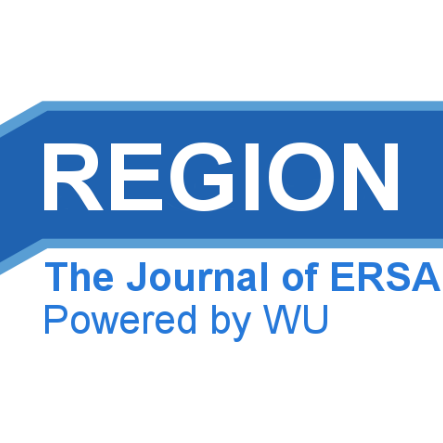Measures of labour market accessibility. What can we learn from observed commuting patterns?
DOI:
https://doi.org/10.18335/region.v7i1.261Abstract
It is well known that measures of labour market accessibility explains spatial variation in housing prices even in markets with polycentric labour market structures. This paper examines whether data on observed commuting patterns can replace or supplement gravity-based measures representing the commuting potential at specific locations. We use data from a region in Western Norway,and we find that measures based on observed commuting flows and commuting time cannot replace a gravity-based measure of labour market accessibility. Based on, inter alia, the spatial Durbin estimator we find that measures of observed commuting flows increase the explanatory power of a hedonic house price model.

Downloads
Published
How to Cite
Issue
Section
License
REGION is an open journal, and uses the standard Creative Commons license: Copyright We want authors to retain the maximum control over their work consistent with the first goal. For this reason, authors who publish in REGION will release their articles under the Creative Commons Attribution license. This license allows anyone to copy and distribute the article provided that appropriate attribution is given to REGION and the authors. For details of the rights authors grant users of their work, see the "human-readable summary" of the license, with a link to the full license. (Note that "you" refers to a user, not an author, in the summary.) Upon submission, the authors agree that the following three items are true: 1) The manuscript named above: a) represents valid work and neither it nor any other that I have written with substantially similar content has been published before in any form except as a preprint, b) is not concurrently submitted to another publication, and c) does not infringe anyone’s copyright. The Author(s) holds ERSA, WU, REGION, and the Editors of REGION harmless against all copyright claims. d) I have, or a coauthor has, had sufficient access to the data to verify the manuscript’s scientific integrity. 2) If asked, I will provide or fully cooperate in providing the data on which the manuscript is based so the editors or their assignees can examine it (where possible) 3) For papers with more than one author, I as the submitter have the permission of the coauthors to submit this work, and all authors agree that the corresponding author will be the main correspondent with the editorial office, and review the edited manuscript and proof. If there is only one author, I will be the corresponding author and agree to handle these responsibilities.




